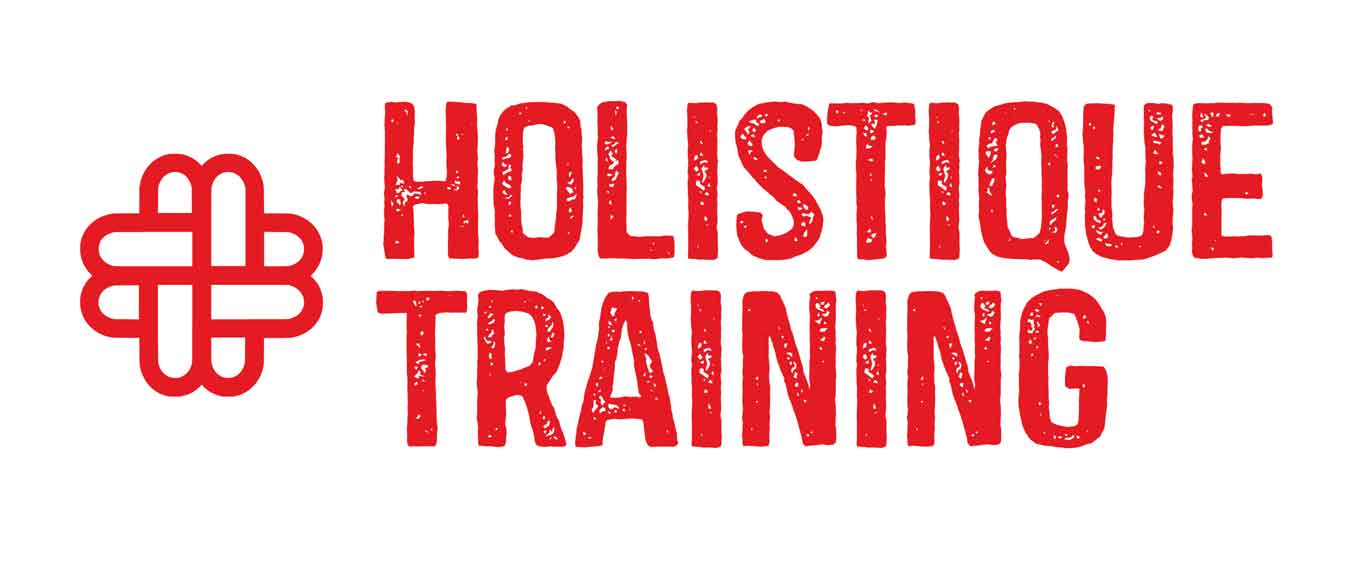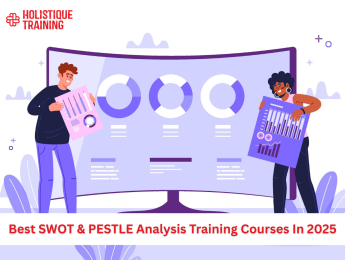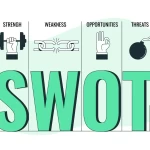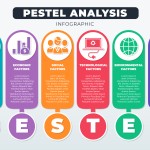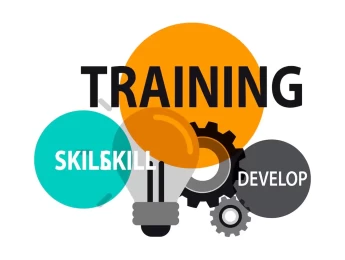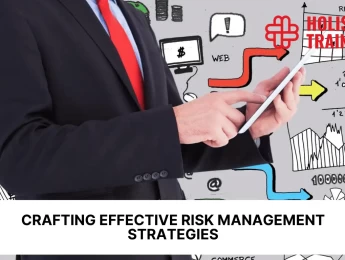- Table of Contents
- 1. Introduction:
- 2. What is SWOT Analysis?
- Strengths
- Weaknesses
- Opportunities
- Threats
- 3. What is PESTLE Analysis?
- Political
- Economic
- Social
- Technological
- Legal
- Environmental
- 4. Benefits of Training in SWOT and PESTLE
- Why Might Someone Choose to Take a Training Course?
- How Do These Courses Improve Analytical and Strategic Thinking?
- What Certifications or Accreditations Might Be Offered?
- 5. Criteria for Choosing the Best Training Course
- 6. Top Recommended SWOT and PESTLE Training Courses
- Strategic Business Analysis: SWOT & PESTLE (Coursera)
- SWOT and PESTLE Masterclass (Udemy)
- Advanced Business Strategy: SWOT & PESTLE (LinkedIn Learning)
- Introduction to Business Analysis (Coursera)
- Strategic Analysis Tools Workshop (The Strategy Institute)
- Practical Strategic Planning Using SWOT & PESTLE (FutureLearn)
- Certified Business Analyst (SWOT & PESTLE focus) (BCS)
- Strategic Tools for Business Success (EdX)
- Strategic Business Analysis: Mastering SWOT & PESTLE (Holistique Training)
- 7. Online vs. In-Person Courses: Which One to Choose?
- 8. Tips to Get the Most Out of Your Training
- 9. Conclusion
1. Introduction:
In today’s competitive and fast-changing business world, professionals and students alike need tools to make informed, strategic decisions. Among the most widely used frameworks for strategic planning and analysis are SWOT and PESTLE analyses. But what are they, and why are they essential?
SWOT stands for Strengths, Weaknesses, Opportunities, and Threats, and is used to assess an organisation’s internal and external factors. PESTLE, on the other hand, analyses Political, Economic, Social, Technological, Legal, and Environmental influences that impact a business or project from the outside.
These frameworks are invaluable because they simplify complex situations and help individuals and organisations see the bigger picture. Managers use them to plan strategies, marketers rely on them to understand market dynamics, and students utilise them to develop their analytical thinking.
In this article, we will discuss what SWOT and PESTLE analyses are, their components, why training in these tools is beneficial, how to choose the right course, and a list of the best training courses available both online and in-person. By the end, you’ll know how to select the course that suits your needs and how to apply what you learn effectively.
2. What is SWOT Analysis?
Strengths
Strengths refer to internal attributes of an organisation that give it an advantage over competitors. This might include a strong brand, loyal customer base, proprietary technology, or skilled employees. For example, a bakery known for its exceptional quality and service would list these as strengths.
Weaknesses
Weaknesses are internal areas where the organisation is lacking or disadvantaged. It could involve outdated technology, poor location, or low staff morale. A company with inefficient processes or a weak online presence would identify these as weaknesses to address.
Opportunities
Opportunities are external factors that an organisation can exploit to its benefit. These might include emerging markets, changes in consumer behaviour, or advances in technology. For instance, a clothing company might see opportunities in sustainable fashion trends.
Threats
Threats are external challenges that could harm the organisation. They include competition, regulatory changes, or economic downturns. For example, a rise in raw material prices could threaten a manufacturer’s profitability.
These components together enable businesses to craft strategies that build on strengths, mitigate weaknesses, seize opportunities, and guard against threats.
3. What is PESTLE Analysis?
PESTLE analysis is a strategic framework used to identify and analyse the external factors that can affect an organisation or a project. Unlike SWOT, which examines internal strengths and weaknesses alongside external opportunities and threats, PESTLE focuses exclusively on the macro-environmental influences that lie outside the organisation’s control.
It stands for Political, Economic, Social, Technological, Legal, and Environmental — six categories that together give a comprehensive view of the wider context in which a business operates. Below, we’ll explain each factor in detail with examples and insights into how they can shape decisions.
Political
Political factors include the influence of governments, political stability, taxation policies, trade tariffs, and foreign policy. These factors determine the regulatory and legal environment in which businesses operate.
For example, a government introducing higher import duties on certain goods could increase the costs for companies that rely on imported materials. Similarly, political instability or conflict in a country can create uncertainty and risk, discouraging investment. On the other hand, supportive government policies — such as subsidies for renewable energy — can create opportunities for businesses in those sectors.
Businesses must therefore monitor changes in political leadership, trade agreements, and government priorities that could affect their markets or operations.
Economic
Economic factors refer to the overall health and performance of the economy, which influences consumer purchasing power and business profitability. Key aspects include inflation rates, interest rates, unemployment levels, currency exchange rates, and economic growth trends.
For instance, during a recession, customers tend to reduce spending, which negatively affects industries such as luxury goods or tourism. Conversely, a period of strong economic growth usually means higher consumer confidence, increased spending, and more opportunities for expansion.
Companies operating internationally also need to pay attention to currency fluctuations, which can affect the costs of imports and exports or impact profits when earnings are converted into their home currency.
Social
Social factors examine societal trends and behaviours that influence demand for products and services. These include demographics (such as age distribution, population growth), cultural attitudes, education levels, and lifestyle preferences.
An ageing population, for example, creates increased demand for healthcare, retirement services, and age-friendly products. Similarly, a growing awareness of environmental issues may drive consumers to choose sustainable brands over traditional ones.
Understanding social trends allows businesses to adapt their offerings to meet changing needs and expectations, making this dimension critical to long-term success.
Technological
Technological factors encompass innovations, advancements, and the pace of technological change. They include areas such as automation, artificial intelligence, new production techniques, research and development, and digital transformation.
For example, a retailer adopting e-commerce and mobile payment technologies can reach more customers and compete more effectively. Similarly, companies investing in data analytics gain better insights into customer behaviour, improving their decision-making and efficiency.
On the flip side, failing to keep up with technological changes can leave businesses vulnerable to more agile competitors who leverage the latest innovations.
Legal
Legal factors refer to laws and regulations that affect how businesses operate. This includes employment law, health and safety requirements, product standards, intellectual property rights, and consumer protection laws.
For instance, the introduction of strict data protection legislation such as the GDPR in Europe forced companies to overhaul their data handling practices. Non-compliance can result in heavy fines and reputational damage.
Staying up-to-date with changes in the legal landscape is essential, especially for businesses that operate in multiple jurisdictions with different regulatory requirements.
Environmental
Environmental factors address the ecological and environmental issues affecting businesses. These include climate change, resource scarcity, pollution, waste management, and sustainability expectations.
For example, industries that depend heavily on natural resources — such as agriculture, fishing, or energy — are particularly sensitive to environmental changes. Companies are also under increasing pressure from consumers, governments, and investors to adopt sustainable practices and reduce their carbon footprint.
Ignoring environmental concerns not only risks regulatory penalties but can also damage brand reputation in an era of heightened environmental awareness.
By systematically evaluating these six dimensions, organisations gain valuable insights into the external factors shaping their operating environment. This helps them anticipate opportunities and threats, remain compliant, align with market trends, and ultimately make more informed strategic decisions.
PESTLE analysis is therefore not just an academic exercise — it is a practical, actionable tool that supports resilient and adaptable business planning.
4. Benefits of Training in SWOT and PESTLE
Why Might Someone Choose to Take a Training Course?
In an increasingly data-driven and competitive professional world, having a clear understanding of strategic analysis tools such as SWOT and PESTLE can be a significant advantage. While these frameworks are commonly referenced in business and management contexts, many individuals use them superficially without real mastery. A structured training course provides a solid foundation for using these tools effectively and confidently.
Whether you are a student preparing for the job market, a professional aiming for promotion, or a business owner seeking to make more informed decisions, enrolling in a SWOT and PESTLE course can enhance your credibility and competence. These courses are particularly valuable for individuals working in business development, marketing, strategic planning, consultancy, or policy analysis.
How Do These Courses Improve Analytical and Strategic Thinking?
Training in SWOT and PESTLE goes far beyond theory—it builds essential critical thinking and decision-making skills. Through guided exercises, case studies, and scenario planning, learners develop the ability to observe and interpret both internal and external factors affecting organisations.
For instance, participants learn how to evaluate organisational strengths and weaknesses objectively, identify opportunities and threats in the market, and understand how socio-political and economic environments shape business dynamics. They are also trained to draw meaningful conclusions and recommend actions based on structured analysis.
These skills are highly transferable. Someone who completes this kind of training is better equipped to contribute to team discussions, develop evidence-based strategies, and foresee risks—traits that employers actively seek in leadership and managerial candidates.
What Certifications or Accreditations Might Be Offered?
Many SWOT and PESTLE training courses, particularly those offered by well-established platforms or institutions, come with certificates of completion or even professional accreditation.
For example, online platforms like Coursera, LinkedIn Learning, or FutureLearn often offer certificates endorsed by top universities or industry organisations. Professional bodies such as BCS (The Chartered Institute for IT) or the Institute of Leadership and Management may also include modules on these tools within broader certification programmes.
Holding a recognised certificate can be added to your CV or LinkedIn profile, serving as evidence of your strategic competency. It signals to employers and clients that you have invested in upskilling and are capable of applying structured methods to real-world problems—a valuable asset in today’s job market.
5. Criteria for Choosing the Best Training Course
When choosing a SWOT and PESTLE course, you should consider several key factors:
- Accredited Trainers: Ensure the instructors are experienced professionals with recognised credentials.
- Practical Applications: Opt for courses that include real-life examples, exercises, and case studies to bridge theory and practice.
- Support and Resources: Good courses offer ongoing support, downloadable resources, and opportunities to ask questions.
- Flexibility: Consider whether the course fits your schedule and learning style, whether online or in-person.
- Reviews and Testimonials: Always read feedback from past participants to gauge the course’s quality and relevance.
A high-quality course combines expert teaching, practical content, and strong learner support to deliver a worthwhile experience.
6. Top Recommended SWOT and PESTLE Training Courses
Below is a detailed look at some of the best available training courses that cover SWOT and PESTLE analysis. Each course is summarised individually with key information about the platform, duration, price, language, and target audience. After the descriptions, you will also find a table for quick comparison.
Strategic Business Analysis: SWOT & PESTLE (Coursera)
Offered by Coursera, this course is designed for both beginners and professionals who want a solid introduction to strategic analysis tools. Spanning four weeks, it is delivered entirely online, making it flexible and accessible. Learners can expect to pay around £39 per month, and the course is taught in English. You will gain practical insights into applying SWOT and PESTLE in real business scenarios, supported by assignments and peer reviews.
SWOT and PESTLE Masterclass (Udemy)
This concise two-hour course on Udemy is perfect for busy managers and marketers looking for a quick, practical understanding of SWOT and PESTLE. At only £19.99, it’s affordable and highly rated by users. The course is self-paced and in English, with lifetime access to materials. It includes case studies, templates, and quizzes to help consolidate your learning.
Advanced Business Strategy: SWOT & PESTLE (LinkedIn Learning)
Ideal for business professionals already familiar with basic concepts, this 1.5-hour course dives deeper into applying SWOT and PESTLE strategically. Available through LinkedIn Learning, it’s free if you have a subscription. The content focuses on real-world examples and includes downloadable resources.
Introduction to Business Analysis (Coursera)
This free eight-hour course from Coursera is targeted at students and beginners. It introduces the fundamentals of business analysis, including how to use SWOT and PESTLE effectively. The course is structured around self-paced learning modules and provides an excellent starting point for those new to the subject.
Strategic Analysis Tools Workshop (The Strategy Institute)
This intensive one-day workshop by The Strategy Institute is designed for senior professionals who want an immersive, hands-on experience. Conducted in English and priced at £450, it combines lectures, group work, and real-life case studies to refine your strategic planning skills.
Practical Strategic Planning Using SWOT & PESTLE (FutureLearn)
FutureLearn offers this three-week course that is accessible to everyone. It’s free to audit, with an optional certificate available for £42. The course uses a combination of video lectures, discussions, and practical exercises to help you confidently apply SWOT and PESTLE in your context.
Certified Business Analyst (SWOT & PESTLE focus) (BCS)
This premium course by the British Computer Society (BCS) is geared towards business analysts who want professional certification. It runs for three days in-person or virtually, costs approximately £1,200, and includes formal assessment and certification recognised in the industry.
Strategic Tools for Business Success (EdX)
This six-week online course available through EdX combines both free and paid options (about £70 for a certificate). It is particularly suited to students and entrepreneurs who want a deeper understanding of strategic tools beyond just SWOT and PESTLE, including competitive analysis and scenario planning.
Strategic Business Analysis: Mastering SWOT & PESTLE (Holistique Training)
Offered by Holistique Training, this advanced course focuses on mastering both SWOT and PESTLE analysis for strategic business decisions. Designed for professionals and leaders, it combines theory, real-world case studies, and interactive workshops to ensure participants can confidently apply both frameworks in complex scenarios. Delivered online or in-person, it is suitable for those seeking a more in-depth and practical approach. The course provides certification upon completion and is ideal for managers, consultants, and anyone involved in strategic planning.
These courses cater to a wide variety of needs and budgets, from free introductory modules for beginners to advanced certifications and workshops for experienced professionals. Whether you prefer a quick online refresher or an in-depth, interactive programme, there is an option to suit your goals.
7. Online vs. In-Person Courses: Which One to Choose?
Both online and in-person courses offer distinct advantages, and the best choice depends on your personal circumstances.
Online Courses | In-Person Courses |
Flexible schedule | Fixed schedule |
Accessible anywhere | Location-specific |
Often cheaper | Usually more expensive |
Self-paced | Structured learning |
Limited networking | Greater networking opportunities |
Good for independent learners | Better for those needing interaction |
If you value flexibility and affordability, online courses are ideal. On the other hand, if you prefer direct interaction, immediate feedback, and networking, an in-person workshop may be more suitable.
8. Tips to Get the Most Out of Your Training
To maximise the benefits of your course, start by setting clear goals: why are you taking the course, and what do you want to achieve?
Prepare by reviewing basic concepts beforehand and bringing specific challenges or examples from your work to apply during exercises. Engage actively with instructors and peers, ask questions, and participate in discussions.
After completing the course, apply what you have learnt as soon as possible. Conduct a SWOT or PESTLE analysis in your workplace or on a personal project. Share your findings with colleagues or mentors for feedback.
Finally, keep your notes, resources, and certificates organised for future reference and continuous learning. The more you practise, the more confident and competent you’ll become.
9. Conclusion
SWOT and PESTLE analyses are indispensable tools for strategic thinking and planning in today’s dynamic environment. Learning to use them effectively can help you stand out, make better decisions, and contribute more meaningfully to your organisation.
This article outlined what these tools are, their benefits, how to choose a suitable course, and which training programmes are worth considering. Whether you opt for an online course for its flexibility or an in-person session for its interactivity, the key is to take the first step and begin.
So, review the options, select the course that aligns with your goals, and start your journey towards mastering strategic analysis today.
